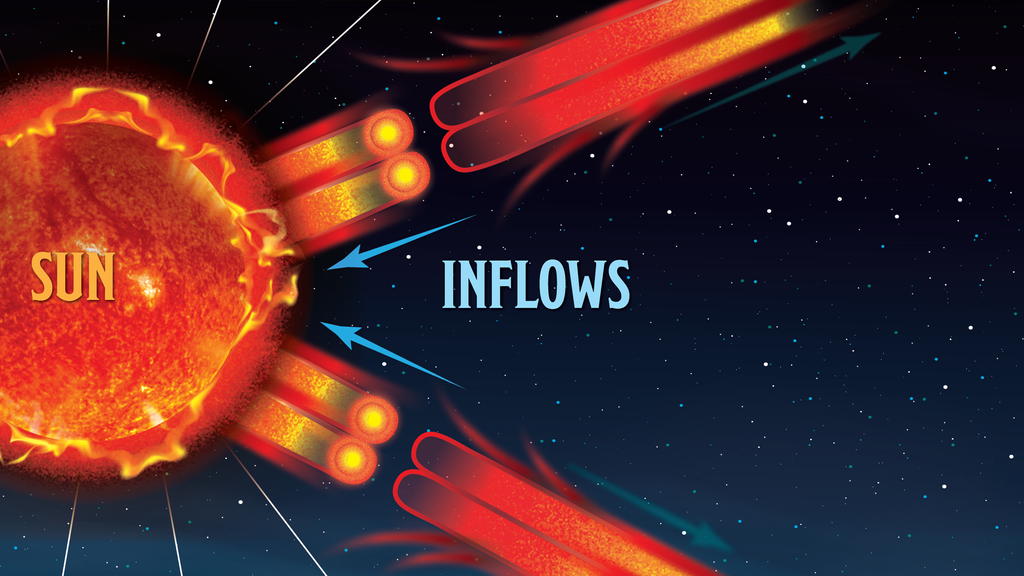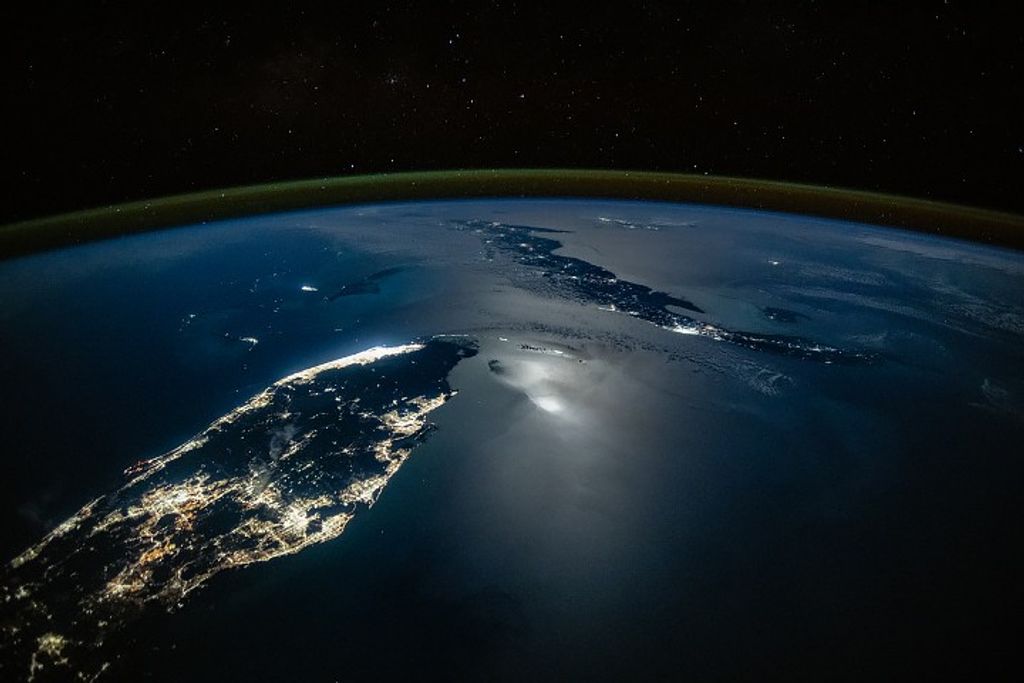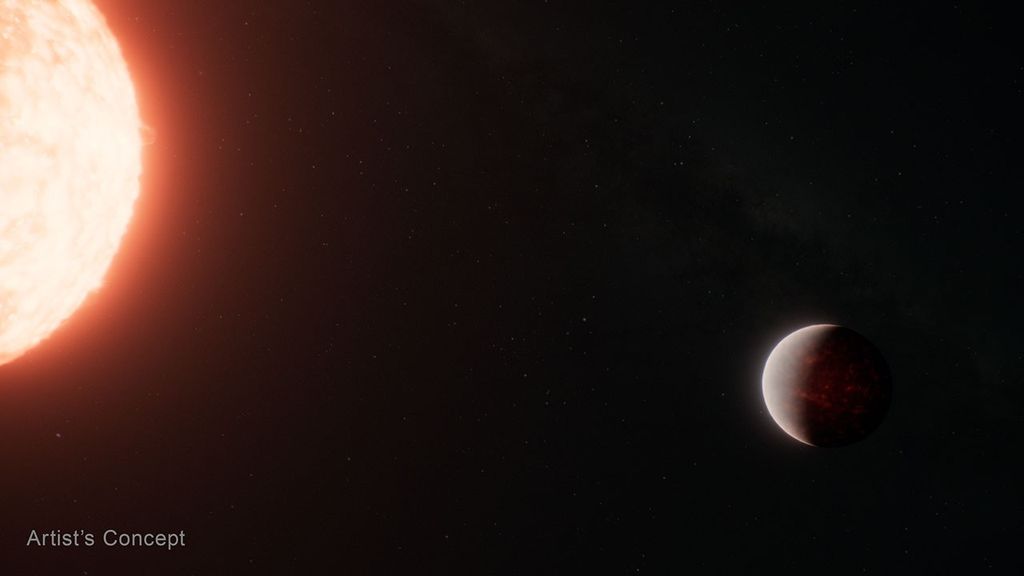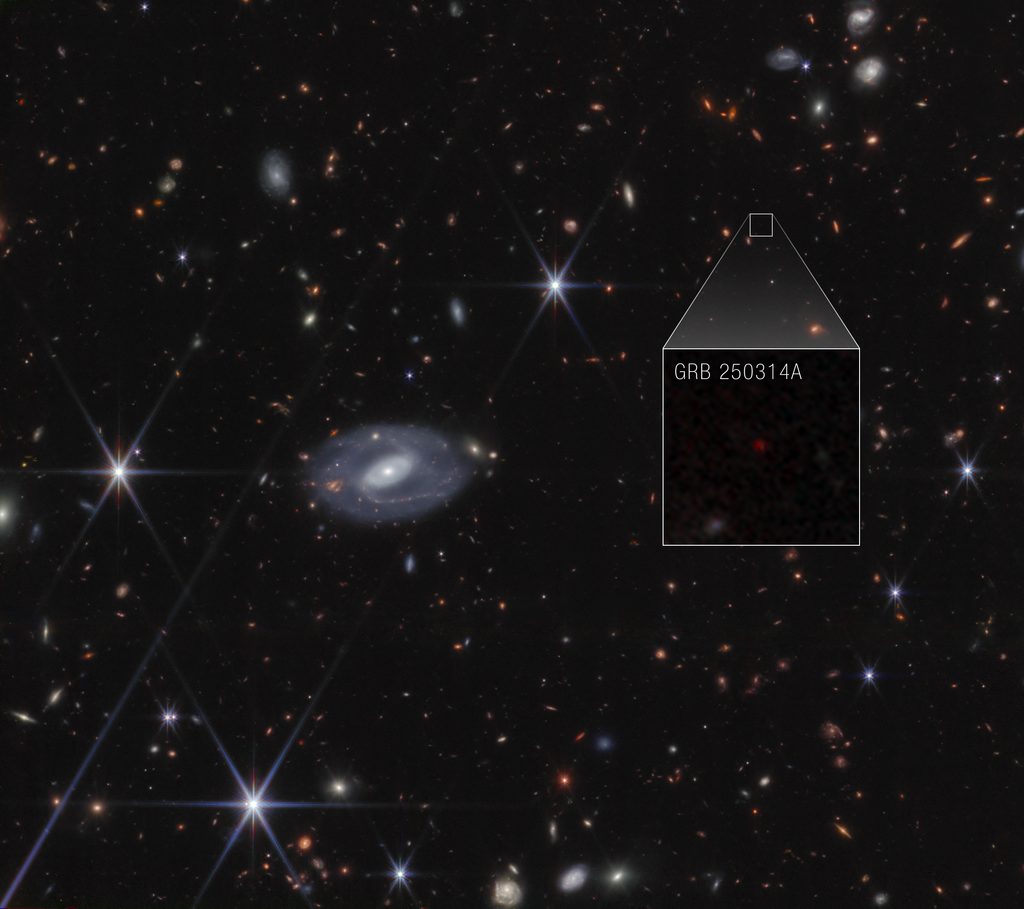1 min read
Complex Dust Disk, Expected Birthplace of Planets, Around Star HD 141569A
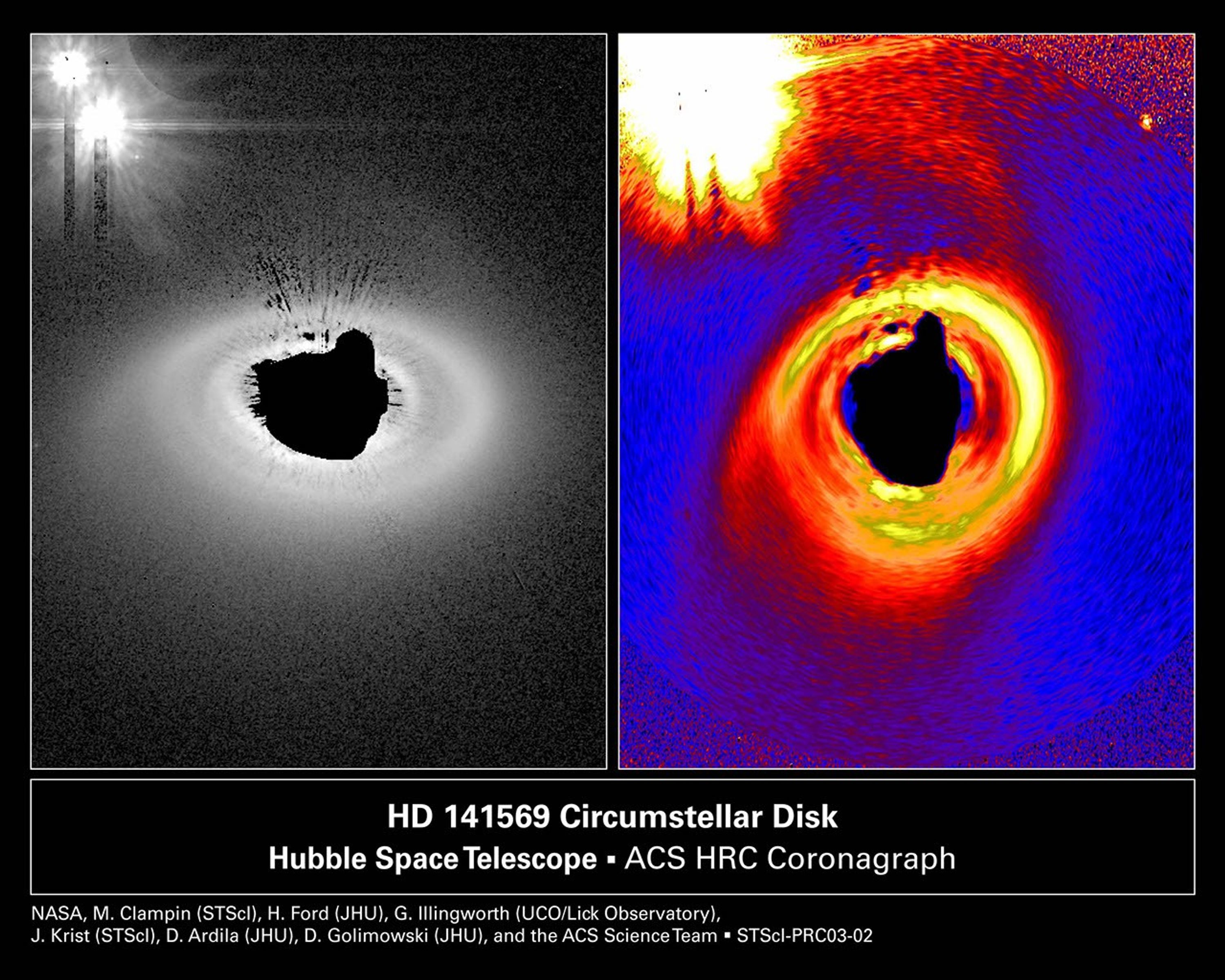
NASA Hubble Space Telescope's new Advanced Camera for Surveys (ACS) has given astronomers their clearest view yet of the dust disk around a young, 5-million-year-old star. Such disks are expected to be the birthplace of planets. The star, called HD 141569A, lies 320 light-years away in the constellation Libra and appears to be a member of a triple-star system.
The star HD 141569A was first identified as a candidate for a circumstellar disk in 1986, from observations done with the NASA/Netherlands/United Kingdom Infrared Astronomy Satellite (IRAS). An excess of infrared radiation associated with the star provides telltale evidence for the presence of a dust disk. Hubble's Near Infrared Camera and Multi-Object Spectrometer photographed the disk in 1999 and revealed two concentric rings divided by a dark lane. This was interpreted as evidence of dynamical sculpting by one or more planets.
The ACS reveals that the disk's structure is much more complex than previously thought. The disk is actually a tightly wound spiral structure. The outer regions of the disk reveal two diffuse spiral arms, one of which appears to be associated with the nearby double star system (HD 141569BC) seen at the upper left. The apparent connection between the disk and the double star suggest that an interaction with the double star may be responsible for the structures seen in the disk.
However, previous mid-IR images of the disk show that it is relatively clear of dust within approximately 2.8 billion miles of the star. This inner region may have been swept clear by one or more unseen planets.
These observations of the disk were obtained with the ACS's High Resolution Camera (HRC) coronagraph. The photo on the left is a processed visible light image. In the photo on the right, the disk has been geometrically altered to simulate a face-on view, and false-color has been applied to enhance the disk structure. The black center marks regions where light from the star has been masked out. These images are the first results of a survey of disks around young main-sequence stars being conducted by the ACS science team.
About the Object
- R.A. PositionR.A. PositionRight ascension – analogous to longitude – is one component of an object's position.15h 49m 57.74s
- Dec. PositionDec. PositionDeclination – analogous to latitude – is one component of an object's position.-3° 55' 16.35"
- ConstellationConstellationOne of 88 recognized regions of the celestial sphere in which the object appears.Libra
- DistanceDistanceThe physical distance from Earth to the astronomical object. Distances within our solar system are usually measured in Astronomical Units (AU). Distances between stars are usually measured in light-years. Interstellar distances can also be measured in parsecs.320 light-years (100 parsecs)
- DimensionsDimensionsThe physical size of the object or the apparent angle it subtends on the sky.The ACS image is roughly 16 arcseconds in width. At the distance of this star, this corresponds to approximately 1600 Astronomical Units or 1/40 of a light-year.
About the Data
- Data DescriptionData DescriptionProposal: A description of the observations, their scientific justification, and the links to the data available in the science archive.
Science Team: The astronomers who planned the observations and analyzed the data. "PI" refers to the Principal Investigator.Principal Astronomers / ACS science team: H.C. Ford (JHU), G.D. Illingworth (UCO/Lick Observatory), N. Benitez (JHU), M. Clampin (STScI), G.F. Hartig (STScI), D.R. Ardila (JHU), F. Bartko (Bartko Science & Technology), J.P. Blakeslee (JHU), R.J. Bouwens (UCO/Lick Obs.), T.J. Broadhurst (Racah Institute of Physics, The Hebrew University), R.A. Brown (STScI), C.J. Burrows (STScI), E.S. Cheng (NASA-GSFC), N.J.G. Cross (JHU), P.D. Feldman (JHU), M. Franx (Leiden Observatory), D.A.Golimowski (JHU), C. Gronwall (PSU), L. Infante (Pontificia Universidad Catolica de Chile), R.A. Kimble (NASA GSFC), J.E. Krist (STScI), M.P. Lesser (Steward Obs.), A.R. Martel (JHU), F. Menanteau (JHU), G.R. Meurer (JHU), G.K. Miley (Leiden Obs.), M. Postman (STScI), P. Rosati (ESO), M. Sirianni (JHU), W.B. Sparks (STScI), H.D. Tran (JHU), Z.I. Tsvetanov (JHU), R.L. White (STScI/JHU), and W. Zheng (JHU) - InstrumentInstrumentThe science instrument used to produce the data.HST>ACS/HRC
- Exposure DatesExposure DatesThe date(s) that the telescope made its observations and the total exposure time.July 21, 2002, Exposure Time: 3.9 hours
- FiltersFiltersThe camera filters that were used in the science observations.F435W (B), F606W (V)
- Object NameObject NameA name or catalog number that astronomers use to identify an astronomical object.HD141569
- Object DescriptionObject DescriptionThe type of astronomical object.Massive Star with Disk
- Release DateJanuary 6, 2003
- Science ReleaseHubble Reveals Complex Circumstellar Disk
- Credit

Share
Details
Claire Andreoli
NASA’s Goddard Space Flight Center
Greenbelt, Maryland
claire.andreoli@nasa.gov









